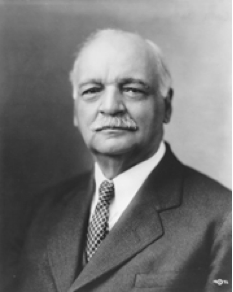

CHARLES CURTIS PROFESSIONAL
“No man or boy ever received better advice, it was the turning point in my life.”Ĭharles Curtis (left) sits with Herbert Hoover.Ĭurtis gained some fame as a talented horse rider, known on the circuit as “Indian Charlie.” But his grandparents on both sides encouraged him to pursue a professional career, and he became a lawyer and then a politician. “I took her splendid advice and the next morning as the wagons pulled out for the south, bound for Indian Territory, I mounted my pony and with my belongings in a flour sack, returned to Topeka and school,” Curtis later recalled, in a flourish of self-mythologizing. The adolescent Curtis wanted to move with his community, but, according to his Senate biography, his Kaw grandmother talked him into staying with his paternal grandparents and continuing his education. In 1873, the federal government forced the Kaw south to Indian Territory, which would later become Oklahoma. “He was just a very likeable person even early on when he was just a young boy in Topeka.” “He had a knack for conversation,” Brooks says. Mark Brooks, site administrator for the Kansas Historical Society’s Kaw Mission site, says Curtis was known for his personal charisma. Curtis grew up speaking Kanza and French before he learned English. Growing up, he spent time living with both his sets of grandparents and for eight years, he lived on the Kaw reservation.

When he was young, Curtis’ mother died, and his father fought in the Civil War for the United States. The policies Curtis pursued in Congress and then as vice president, specifically those on Native issues, cloud his legacy today despite his groundbreaking achievements.Ĭurtis was born in 1860 to a white father from a wealthy Topeka family and a mother who was one quarter Kaw (a tribe also known as Kanza or Kansa). His rise also tells a broader story of how prominent Native Americans viewed how their communities should assimilate within a predominately white society and government. Prejudice against Native Americans was widespread and intense at the time, but Curtis’s ascent to the office speaks to his skillful navigation of the political system. That honor belongs to Charles Curtis, an enrolled member of the Kaw Nation who served as President Herbert Hoover’s veep for his entire first term from 1929 to 1933. But she won’t be the first person of color in the office. "There are very few recordings of Jennings' work out there, and what there is, is for piano, so this would be an important release even if it wasn't completely brilliant.Next week, when she takes the oath of office, Senator Kamala Harris will make history as the first woman, first African American, and first person of South Asian heritage to become vice president of the United States. "This is dream music of the highest order, extending time before dissolving it entirely into the void." -Jarrod Annis, Aquarium Drunkard
CHARLES CURTIS ARCHIVE
Listed #7 in The Wire’s 2022 Archive Releases of the Year The recording captures Curtis in a performance from 2016 reflecting more than twenty-five years of dedication to the piece. At over eighty minutes, La Monte Young’s justly tuned realization of Piece for Cello and Saxophone for cello alone unifies and extrapolates Terry Jennings’ dense harmonies, creating an extended field of complex sonorities in motion, all brought to life by the immaculate playing of Charles Curtis. Composed over sixty years ago, Piece for Cello and Saxophone, foreshadows a number of movements in postwar avant-garde music.ĭespite the title, there is no saxophone on this album. Jennings died tragically in his early forties, most of his work lost to a chaotic life however, his forward-looking music quietly exerted a lasting influence on composers including Young and Harold Budd. Born in Los Angeles in 1940, Jennings was a close associate of Young, Terry Riley, and Dennis Johnson, and an early adopter of minimalist tendencies, creating slow, sustained music, influenced by jazz, modalism, and late romantic classical music. Saltern’s latest offering marks the first-ever release of “lost minimalist” Terry Jennings’ visionary 1960 composition, Piece for Cello and Saxophone, as arranged in just intonation by legendary composer La Monte Young for renowned cellist Charles Curtis.


 0 kommentar(er)
0 kommentar(er)
